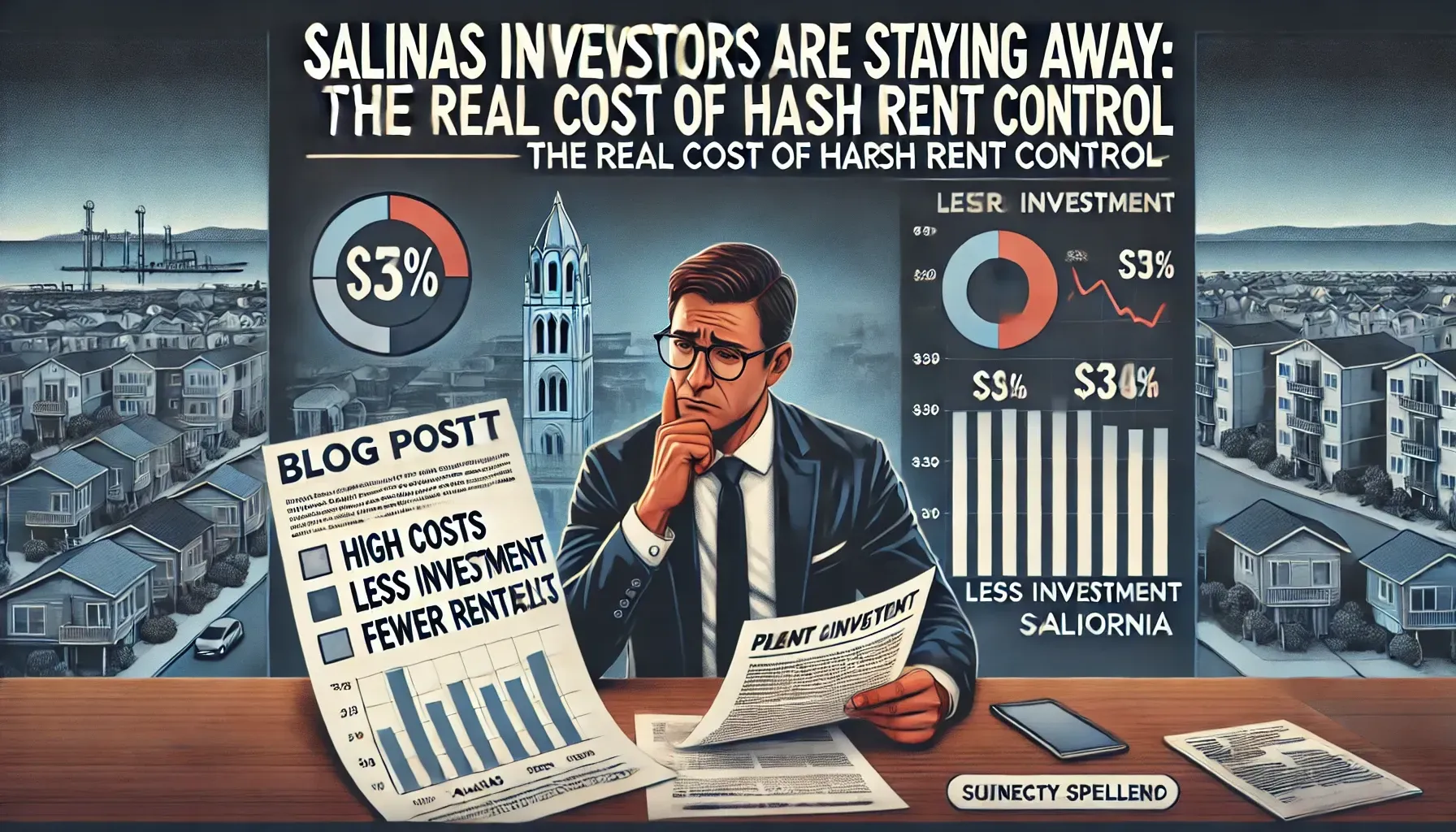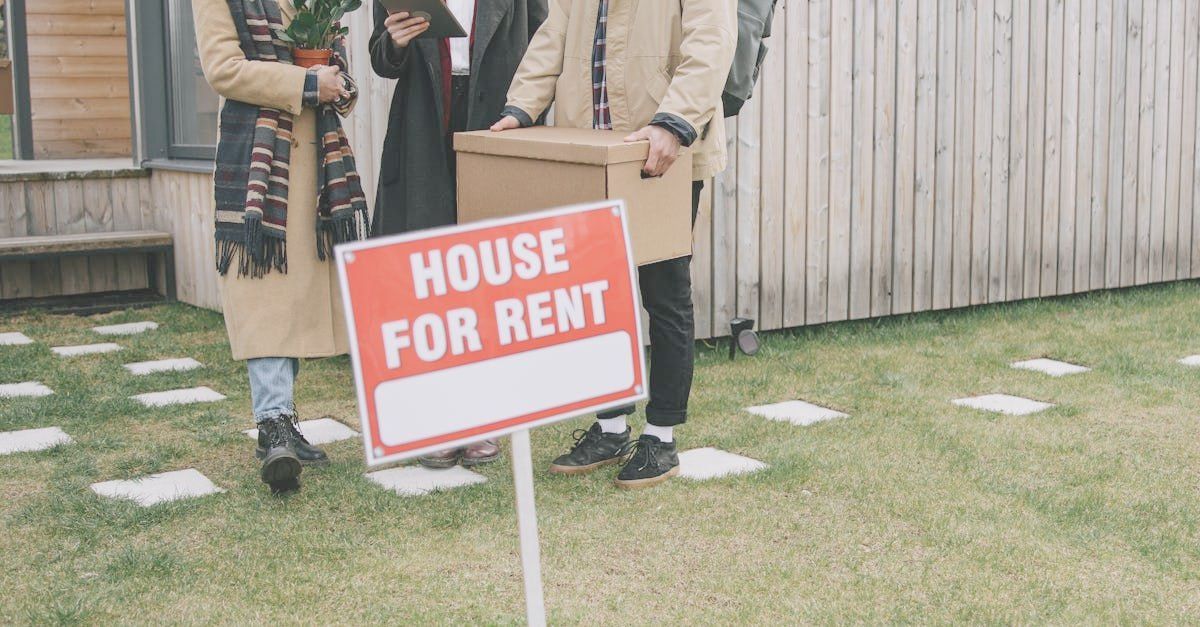TLC's BLOG

In their new book Abundance: How We Build a Better Future, Ezra Klein and Derek Thompson make a sharp and timely argument: America doesn’t have a resource problem—we have a building problem. And nowhere is this more obvious than right here in Salinas, where the Rent Stabilization Ordinance (SRSO) is a perfect example of how good intentions, weaponized bureaucracy, and decades of anti-growth sentiment turned housing policy into a flaming-hot Everything Bagel of contradictions. Let me explain. The Everything Bagel of Policy Paralysis Klein uses the metaphor of the “Everything Bagel” to describe what happens when you try to make a system that pleases everyone. You don’t just get salt or sesame—you get garlic, poppy seeds, onions, flax, chia, and whatever else the latest interest group insists you add. In theory, it’s comprehensive. In practice, it’s a mess. And worse, it prevents the very thing it's supposed to support: action. That’s Salinas housing policy in a nutshell (or maybe a poppy seed). From Ambition to Inertia The Salinas Rent Stabilization Ordinance didn’t spring up overnight—it’s the product of years of policy decisions made by the same people who now shame landlords and investors for the mess they helped create. We downzoned. We layered in CEQA delays. We created permit bottlenecks. We turned “public input” into a bureaucratic moat. And then—when none of that produced more housing—we blamed the people still willing to build or maintain rental units. It’s like making a sandwich with 14 spreads and then wondering why no one wants to take a bite. The Problem Isn’t Scarcity—It’s Permission Klein and Thompson argue that we live in an age of artificial scarcity, where we have the capital, technology, and talent to solve major problems—if we could just give ourselves permission to build. But instead, we’ve created a culture of scarcity by design. We fear change, so we regulate it to death. We want affordability, but we sue every housing project. We want green energy but protest every windmill. We want more rentals, but punish landlords. And when rents go up? We blame the last guy standing. Salinas: Where Common Sense Is Hiding in Plain Sight Here’s the kicker: the solution is so simple, if it were a snake, it would’ve bitten us. We need to build more housing. That means supporting owners and investors, streamlining permitting, and ditching the Everything Bagel approach that tries to satisfy every demand group while building nothing for anyone. Instead of treating landlords like villains, we need to bring them to the table. Instead of creating ever-thicker ordinances, we need to make it easier to build and rent safe, decent housing. And instead of reacting to the crisis with another regulatory band-aid, we should ask: what policies actually lead to abundance? Build More. Shame Less. That’s Abundance. The bottom line? Abundance is a call to build—a reminder that progress is possible, but only if we stop standing in our own way. Salinas doesn’t need more symbolic policy wins. It needs homes, and the people willing to create them. So let’s put down the Everything Bagel and pick up a blueprint. https://www.36northpm.com/abundance-the-everything-bagel-and-why-salinas-cant-build-anything-but-blame-everyone-else/ Could "everything-bagel liberalism" be making the housing crisis worse? (PM+) Podcast Episode · Planet Money · 2025-05-19 · Bonus · Planet Money+ Only · 17m podcasts.apple.com

Why are Property Owners Being Urged to Sell? You may have noticed it too—more and more property owners are receiving invitations to webinars and live streams like the one in the image above. Topics such as “Tax-Smart Exit Strategies” are being promoted by accountants, financial advisors, and real estate professionals alike. These events aren’t just about saving money on taxes. They reflect a deeper concern that’s spreading throughout the rental housing industry: **Is it still worth it to own rental property in California?** The Impact of Rent Control on Owner Decisions Here in Monterey County, and across California, **the political climate surrounding rent control is influencing how property owners view their investments**. Faced with increasing regulation, uncertainty, and rising costs, many owners are questioning whether continuing to rent out their properties is still viable. In some cases, they’re being encouraged to sell—not because it’s financially necessary today, but because they fear what tomorrow might bring. The growing number of “exit strategy” seminars is evidence of this shift. These presentations often highlight how to sell properties while minimizing tax consequences. But behind the technical advice is a common thread: **many owners feel they are being backed into a corner by local and state policies**. ### What This Means for Tenants When owners sell, rental properties often leave the rental market entirely—converted into single-family homes for sale, vacation rentals, or other uses. This **reduces the overall supply of rental housing**, making it harder for tenants to find affordable places to live. Ironically, the very policies intended to protect tenants can sometimes lead to tighter housing markets and higher competition for available units. This doesn’t mean rent control has no place in housing policy. But it does highlight the importance of **balanced solutions**—ones that take into account the perspectives of both tenants and landlords, and that **don’t unintentionally incentivize owners to leave the market altogether**. ### The Need for Collaboration At the **Tenant Landlord Coalition of Monterey**, we believe in **collaboration over conflict**. We recognize that **healthy rental housing markets require both strong tenant protections and policies that support responsible property ownership**. When we lose that balance, we risk losing much-needed rental housing, which affects our entire community. As this trend continues, it’s important for policymakers, community leaders, and residents to understand **why property owners are feeling pressure to sell**, and to work together to find solutions that truly benefit everyone. Want to get involved or stay informed? Visit us at [www.tlc-monterey.org](https://www.tlc-monterey.org/about) to learn more about our work advocating for **mutual benefit—not burdensome policies.** --- Let me know if you'd like to add quotes, stats, or further analysis on specific rent control policies in Monterey County!

The Salinas rental market is facing an alarming reality—investment dollars are drying up. Over the past several months, the message from investors, developers, and property owners has been loud and clear: Salinas’ extreme rent control policies are driving investment away. When pitching apartment deals in Salinas, the response has been resounding: “Why would we invest in a city that has harsh rent control?” “Why would we not take our capital to a non-rent control city or state?” “Why would we invest in new projects or ADUs when the city sends us a message that we are bad?” This isn’t just speculation—it’s already happening. Since July 2024, there have been only two sales of 5+ unit apartment buildings in Salinas. One more is pending, but only because it is selling at a deep discount. This means fewer new projects, less housing availability, and an overall weakening of the rental housing market in Salinas. The Bigger Picture: A Warning from Los Angeles Salinas is not the only city dealing with the fallout of aggressive tenant protection policies. Los Angeles recently faced backlash over a proposed rent freeze and eviction ban , with public officials reconsidering the measure due to its long-term economic consequences. As District 12 Councilmember John Lee stated: "When we as a city tell developers that at any moment the city council can commandeer your investment, who is going to want to build in this city? Who is going to want to do business here?" This is the exact question Salinas should be asking itself. If cities like Los Angeles—where housing demand is high—are stepping back to rethink extreme rent control, why is Salinas doubling down on policies that drive away the very investors and developers needed to create more housing? The Future of Salinas Housing The reality is simple: when investors walk away, development slows, housing stock declines, and affordability worsens. We need policies that encourage investment, not punish it. Salinas leaders must take a hard look at the data and recognize the long-term damage of their approach. Rent control is not a solution—it’s a barrier to building the housing we desperately need. If we continue down this path, we risk turning Salinas into a market where no one wants to invest, no one wants to build, and ultimately, no one can find a place to live. Now is the time for change. It's time for Salinas to adopt policies that balance tenant protections with economic sustainability—before it’s too late. https://caanet.org/concord-council-to-reconsider-rent-control-just-cause-eviction-policies/ https://www.36northpm.com/?p=3478&preview=true

On September 23, 2024, the Salinas Valley Chamber of Commerce submitted a detailed letter to the Salinas City Council outlining their opposition to the proposed Rent Stabilization Ordinance. This letter sheds light on a polarizing issue affecting tenants and landlords in Salinas and offers alternative solutions to address the city’s housing crisis without resorting to rent control. Here’s a breakdown of their arguments and suggestions. Understanding the Opposition The Chamber identifies two main provisions of the ordinance that they find problematic: 1. **Capping Rent Increases:** Limiting annual rent increases to the lesser of 2.75% or 75% of the Consumer Price Index (CPI). 2. **Retroactive Application:** Applying these limitations to rents as of December 31, 2023. While the Chamber acknowledges the housing challenges in Salinas, they argue these provisions fail to consider the broader economic impacts and could harm both landlords and the community. Key Arguments Against the Ordinance 1. Overgeneralization of Landlords: The Chamber critiques the portrayal of landlords as a monolithic group exploiting tenants. They emphasize the diversity within the landlord community, from corporate entities using data-driven rent algorithms to local families and individuals personally invested in their tenants’ well-being. 2. Unrealistic Profit Assumptions: The ordinance presumes landlords are generating excessive profits. The Chamber counters that profitability is subjective and dependent on individual circumstances, making a blanket restriction on rent increases inappropriate. 3. Negative Economic Impacts: By capping rent increases at such a low threshold, the Chamber predicts some landlords will remove units from the rental market, exacerbating the housing shortage and making it harder for businesses to attract and retain employees. 4. Stress on Landlords: Retroactively limiting rent increases could lead to confusion and anxiety among landlords, particularly if they are required to issue refunds for rents already collected. 5. Enforcement Challenges: The Chamber questions the city's ability to enforce the ordinance fairly and efficiently, citing past struggles with the rental registry program. Proposed Alternatives Rather than rent stabilization, the Chamber recommends: 1. Increasing Housing Supply: The Chamber stresses the need to address the root cause of high housing costs—limited supply. They advocate for policies that promote housing development, including market-rate housing and public-private partnerships. 2. Regular Accountability: They suggest ongoing evaluations of the city’s progress in meeting housing goals, similar to the approach taken by Pacific Grove. 3. Encouraging Development: Highlighting stalled private development projects, the Chamber calls for renewed support for market-driven solutions. 4. **Mediation Committees:** To resolve disputes between tenants and landlords, the Chamber recommends forming mediation committees rather than implementing sweeping rent control measures. 5. Revisiting the Rental Registry: The Chamber criticizes the lack of transparency and performance data from the city’s rental registry program and urges improvements before adding further regulations. Balancing Tenant Protections with Growth The Chamber’s letter offers a nuanced perspective, balancing compassion for tenants’ struggles with the practical realities faced by landlords. It challenges the notion that rent stabilization is a panacea for the housing crisis and proposes long-term strategies that aim to expand housing availability, reduce costs, and foster economic growth in Salinas. As the debate unfolds, this letter serves as a critical piece of dialogue in shaping housing policy, encouraging decision-makers to consider both the immediate needs of tenants and the sustainability of the rental market. --

Monterey County's housing market remains in a precarious position, where demand consistently outpaces supply due to decades of underdevelopment. In October, the median price for single-family homes stood at $919,838, nearly identical to last year's $920,000. This stability persists despite a 41% increase in inventory compared to 2023【 https://www.montereyherald.com/2024/11/21/monterey-county-median-home-price-at-919k-in-october-1-048m-in-june/ 】. Local rental regulations and the looming impact of Proposition 33 have had a profound effect on the market. According to Adam Pinterits, government and community affairs director for the Monterey County Association of Realtors, “many sellers and property managers told me that local rental regulations and the threat of Proposition 33 drove them to sell rental housing.” This trend mirrors nationwide patterns where overregulation of rental housing prompts property owners to exit the market, displacing tenants and worsening affordability【https://www.montereyherald.com/2024/11/21/monterey-county-median-home-price-at-919k-in-october-1-048m-in-june/】. The California Association of Realtors highlighted that October saw a statewide rebound in home sales, the fastest year-over-year sales pace in 40 months. However, challenges remain due to the gradual decline in interest rates, which may slow buyer activity in the future【https://www.montereyherald.com/2024/11/21/monterey-county-median-home-price-at-919k-in-october-1-048m-in-june/】. Despite these challenges, Pinterits emphasized that “it’s still a great time to sell a home in Monterey County,” as demand remains strong and reflects the enduring value of homeownership【https://www.montereyherald.com/2024/11/21/monterey-county-median-home-price-at-919k-in-october-1-048m-in-june/】.

This discussion is crucial for anyone interested in understanding why housing costs in California remain so high and what we can do about it. Nolan Gray and Jim Righeimer offer insights that extend beyond partisan viewpoints and get to the root of the housing issue. To see their full analysis and learn more about the specific policies and solutions they propose, be sure to watch the full interview on California Insider. It’s a valuable resource for anyone who wants to understand California's housing policies and the steps we can take to build a more affordable future.

Explore the pivotal Pennell v. City of San Jose case and its impact on rent control, property rights, and housing affordability. Learn how this Supreme Court decision still influences the rental housing market today, balancing landlord rights and tenant protections. Dive into key elements like the Fifth Amendment, the role of government in housing, and the ongoing debate over equitable rent control laws.




